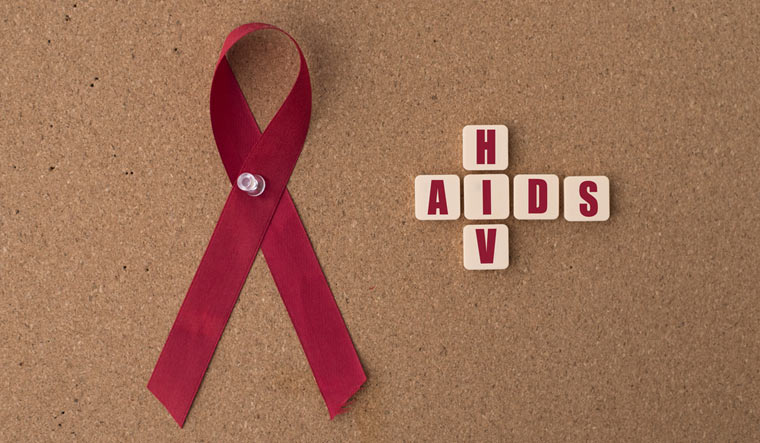According to the National Aids Control Organisation (NACO), in 2021, there were over 24 lakh people living with HIV-AIDS in India. The northeast region states- Mizoram, Nagaland and Manipur have the highest adult HIV prevalence followed by Andhra Pradesh, Telangana and Karnataka. States with most rapid decline are Himachal Pradesh (with around 73% decline from 2010-2021), Tamil Nadu (around 72% decline) and Telangana (nearly 71% decline). An increasing trend is estimated in the northeast states of Tripura, Meghalaya, Arunachal Pradesh, Assam, Sikkim, Mizoram, and the Union Territory of Dadra and Nagar Haveli and Daman and Diu.
December 1 is observed as World AIDS Day.
Dr. Raj Harjani, infectious diseases specialist at the Jaslok Hospital and Research Centre, Mumbai speaks to THE WEEK about the HIV-AIDS myths and facts.
Why after so many years and so much awareness building, myths around HIV-AIDS still persist?
There are no AIDS awareness programs now- not the kind which happened at the start of the pandemic. Now hardly any NGO or government organisations focus on myths and facts. People talk of big things like PrEP (pre-exposure prophylaxis) and PEP (post exposure prophylaxis) but the basics have been forgotten. Regular lectures on the basics of HIV-AIDS awareness to school and college students, truck drivers, migrant workers etc. can be helpful in clearing misconceptions.
What is the most common myth around HIV-AIDS?
The most persistent myth has remained that HIV is transmitted through casual contact. It is not spread through hugging or kissing on the cheeks. It is only transmitted by unprotected sexual intercourse with an HIV infected partner (man or woman), blood transfusion from HIV infected person, HIV infected mother to newborn baby and lastly usage of contaminated syringes and needles used by intravenous drug users during needle exchange programs. Also, HIV is not transmitted by mosquito bites.
HIV spread does not discriminate age, sex, gender, or sexual orientation.
Also, any kind of sexual activity- anal, vaginal or oral can cause HIV. However, anal sex is riskier than vaginal and oral. Oral sex is least risky but other STIs like gonorrhea, herpes, Human Papilloma Viral infections (HPV) are very likely.
It was for long held that only men having sex with men (MSM) could get HIV while actually anyone- MSM, transgender, heterosexual or straight, indulging in unprotected sexual intercourse and needle exchange program can get HIV.
Should we still think of HIV as a death sentence?
These days people taking Anti-retroviral Therapy (ART) live longer and healthier. It’s no longer a killer disease or a death warrant. HIV is now a chronic manageable disease. People on ART who have achieved complete viral suppression and have undetectable viral load do not transmit HIV to the uninfected partner. HIV infected individuals who achieve undetectable viral load, become Untransmittable (U-HIV), that means they do not transmit the HIV virus even when having sex without a condom.
Do birth control pills offer protection against HIV?
Birth control medicines are useful for avoiding pregnancies. Any unprotected sex leads to exchange of sexual secretions which carries HIV and is infectious.
Is it correct that condoms provide protection beyond just against HIV?
Correct usage of lubricated condoms is a highly effective way of preventing HIV transmission. This also prevents from acquiring other Sexually transmitted Infections (STIs) like herpes simplex virus (HSV), gonorrhea, syphilis, chancroid and chlamydial infections.
Can HIV impact a person in a manner that can be recognised just by looking at him/her?
You cannot say from anyone’s face that s/he is suffering from HIV/AIDS. If a blood test (HIV-ELISA) is positive and a repeat test of a fresh sample of the same person is also positive, only then can we say that person is HIV positive.
Is it a complete no for HIV infected people to have children?
That is a myth. U-HIV patients will not get HIV when the HIV infected patient or partner is on ART, and s/he has an undetectable viral load.
Can those in a monogamous relationship be assured of not contracting HIV?
It is good to rely on trusted relations but even then, you cannot just rely on your partner to stay safe. You may get it from blood transfusion from HIV infected patients or if you have undergone skin piercing procedures like tattooing. It is advisable for both the partners to get HIV test done together periodically.
We still think that HIV and AIDS are the same. What’s the difference?
HIV is a virus which can infect anyone. A patient may not be symptomatic but is infectious to anybody and everybody. S/he needs treatment. AIDS is a terminal or last stage of HIV and patient is suffering from opportunistic infections like Herpes zoster, Herpes simplex, HP, tuberculosis, Pneumocystis carinii pneumonia (PCP), Toxoplasmosis of brain, chronic diarrheas and AIDS defining cancers.



